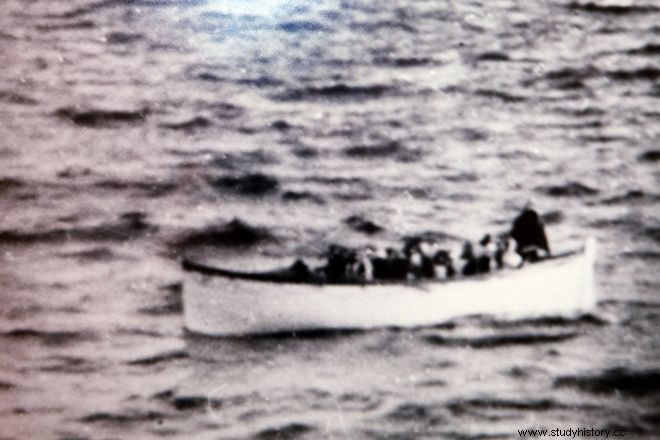The sinking of the Titanic has been written into maritime history and still resonates in popular culture thanks to the 1997 film of the same name. It remains one of the worst peacetime sinkings in history, costing an estimated 1,500 lives, many lost in the icy seas Atlantic waters.
The details are pretty much known. At around 23:40 on April 14, 1912, on a moonless night, the Titanic hit an iceberg at full speed. At 00:00 a distress signal is broadcast, and at 00:20 the first lifeboats are loaded with women and children, while at 00:25 the passenger liner Carpathia replies that she is on her way but is 58 miles or about 4 hours away. By 02:20 the Titanic has sunk beneath the waves and by 04:10 it reaches the Carpathia, with 705 survivors, while around 1,500 people are believed to have perished at sea, although sources disagree on the numbers.
The Carpathia made a heroic effort to rescue as many as it could from the icy waters, ferrying them to New York. However, Carpathia was too far away at the time of the sinking. Hypothermia can kill in as little as 15 minutes. It took the ship about 4 hours to reach the spot, despite the fact that its captain Arthur Rostron pushed the ship to its limits and was sailing in the same dangerous waters.
There was, however, another ship in the area, captained by Lord Stanley Lord, who went down in history as a scoundrel for his inactivity. On April 14, 1912, the day of the collision, Lord ordered the steamer Californian to stop in the ice it found itself in. It was around 22:20.

He instructed the radio operator to send a routine warning message about the icebergs and retired to his cabin. Wireless operator Cyril Evans did so and was quickly confronted by Jack Phillips his Titanic counterpart:“Shut up! I am busy. I am telegraphing to Cape Race”. Cape Race is a relay station, to which messages were sent to be broadcast to New York.
Bored, and no doubt a little annoyed, Evans went to bed, without any orders from his captain to do otherwise. He too had fallen asleep, having returned to the bridge for a while. It was around 00:00. Between 00:30 and 00:45 two flares were seen in the sky. Others followed.
The captain radioed these flares at 01:45, but ignored them, believing them to be ship-to-ship communication signals, as was customary at the time. They were actually the hazard flares from the Titanic.
Captain Lord did not wake up until 04:30, when their voyage to America resumed. They were informed of the disaster, and Captain Lord immediately made his way to the site of the sinking, which he believed to be only 19 miles away. They arrived at 08:30. It is not clear if they saved anyone.
Captain Lord's legacy
Although no formal charges were brought against him, L'Rod was fired a few months later. The public turned against him and even an official re-investigation in 1992 that found no legal wrongdoing condemned his actions. Although he and his descendants tried to "clear" his name, going so far as to insist on a largely debunked theory that a sealing ship named the Samson also failed to help the Titanic, the shame of inactivity still tarnishes him.
Captain Rostron of the Carpathian on the other hand was (and still is) hailed as a hero in the UK and US, knighted in 1926.
Follow News247.gr on Google News and be the first to know all the news
